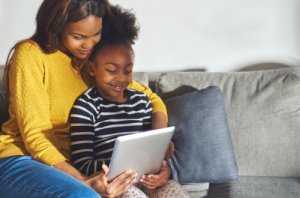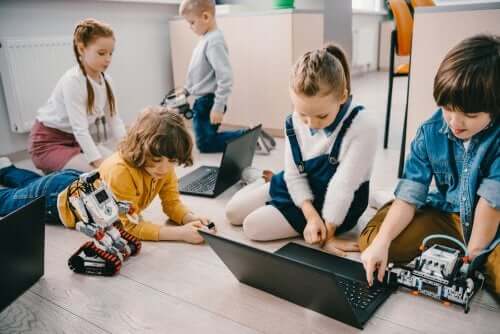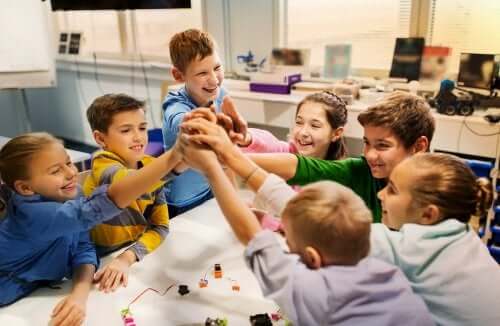What’s a Personal Learning Environment (PLE)?


Written and verified by the social educator Natalia Cobos Serrano
A Personal Learning Environment (PLE) refers to a new way of understanding the teaching-learning process. The pedagogical approach of PLEs refers not only to the content (what the student learns), but also to how, where, and with who they learn.
What do we mean by PLE?
For enthusiasts in the topic, Personal Learning Environments are framed in technology. However, following the most current opinions, a Personal Learning Environment goes way beyond the technological world.
Thus, Personal Learning Environments are considered a pedagogical idea, a way to learn by using technology. Jordi Adell and Linda Castañeda defined this term. According to them, PLE is a set of tools, information sources, connections, and activities that a person uses regularly to learn.

In other words, a Personal Learning Environment includes everything a person consults for information. This also includes the people who act as references and the connections between these people.
“PLEs go far beyond technology and involve profound changes in our usual, personal, and collective educational practices.”
– Adell and Castañeda –
How to properly create a Personal Learning Environment (PLE)
For starters, you must understand that each person has their own personal learning environment. In other words, PLE isn’t a tool but the environment someone learns in.
Now, the important thing you should focus on is how to organize your PLE properly. To do this, as Linda Castañeda explains, you must know how to manage different personal and digital tools and your learning opportunities.
“PLE is a set of tools, data sources, connections, and also activities (experiences) that each person uses habitually to learn.”
– Castañeda and Adell (2010) –
In addition, a good Personal Learning Environment must have three types of essential elements:
- Firstly, reading tools and strategies. Sources of information accessed by the student and that provide such information.
- Also, reflection tools and strategies. Environments where students can transform information.
- Finally, relationship tools and strategies. These would be included in what’s known as a Personal Learning Network and refer to the environments where the student relates to the people they learn from or with.

What you get from a Personal Learning Environment
In principle, the function of a Personal Learning Environment isn’t only to organize and structure knowledge. PLEs, in their role as facilitators of the teaching and learning process, not only make students enjoy collective and public knowledge, but also promote citizen participation by sharing and creating new knowledge.
Also, PLEs undoubtedly help develop new digital skills, as well as find and connect with different people to discover other innovative perspectives and ideas.
In short, PLEs are the set of information sources, tools, services, and communities of people who help lead your own learning. This occurs while you exchange and share information and experiences.
A Personal Learning Environment (PLE) refers to a new way of understanding the teaching-learning process. The pedagogical approach of PLEs refers not only to the content (what the student learns), but also to how, where, and with who they learn.
What do we mean by PLE?
For enthusiasts in the topic, Personal Learning Environments are framed in technology. However, following the most current opinions, a Personal Learning Environment goes way beyond the technological world.
Thus, Personal Learning Environments are considered a pedagogical idea, a way to learn by using technology. Jordi Adell and Linda Castañeda defined this term. According to them, PLE is a set of tools, information sources, connections, and activities that a person uses regularly to learn.

In other words, a Personal Learning Environment includes everything a person consults for information. This also includes the people who act as references and the connections between these people.
“PLEs go far beyond technology and involve profound changes in our usual, personal, and collective educational practices.”
– Adell and Castañeda –
How to properly create a Personal Learning Environment (PLE)
For starters, you must understand that each person has their own personal learning environment. In other words, PLE isn’t a tool but the environment someone learns in.
Now, the important thing you should focus on is how to organize your PLE properly. To do this, as Linda Castañeda explains, you must know how to manage different personal and digital tools and your learning opportunities.
“PLE is a set of tools, data sources, connections, and also activities (experiences) that each person uses habitually to learn.”
– Castañeda and Adell (2010) –
In addition, a good Personal Learning Environment must have three types of essential elements:
- Firstly, reading tools and strategies. Sources of information accessed by the student and that provide such information.
- Also, reflection tools and strategies. Environments where students can transform information.
- Finally, relationship tools and strategies. These would be included in what’s known as a Personal Learning Network and refer to the environments where the student relates to the people they learn from or with.

What you get from a Personal Learning Environment
In principle, the function of a Personal Learning Environment isn’t only to organize and structure knowledge. PLEs, in their role as facilitators of the teaching and learning process, not only make students enjoy collective and public knowledge, but also promote citizen participation by sharing and creating new knowledge.
Also, PLEs undoubtedly help develop new digital skills, as well as find and connect with different people to discover other innovative perspectives and ideas.
In short, PLEs are the set of information sources, tools, services, and communities of people who help lead your own learning. This occurs while you exchange and share information and experiences.
All cited sources were thoroughly reviewed by our team to ensure their quality, reliability, currency, and validity. The bibliography of this article was considered reliable and of academic or scientific accuracy.
- Adell Segura, J y Castañeda Quintero, L. (2010). “Los Entornos Personales de Aprendizaje (PLEs): una nueva manera de entender el aprendizaje”. En Roig Vila, R y Fiorucci, M (Eds.). Claves para la investigación en innovación y calidad educativas. La integración de las tecnologías de la información y la comunicación y la interculturalidad en las aulas. Alcoy: Marfil – Roma TRE Universitá degli studi.
This text is provided for informational purposes only and does not replace consultation with a professional. If in doubt, consult your specialist.








